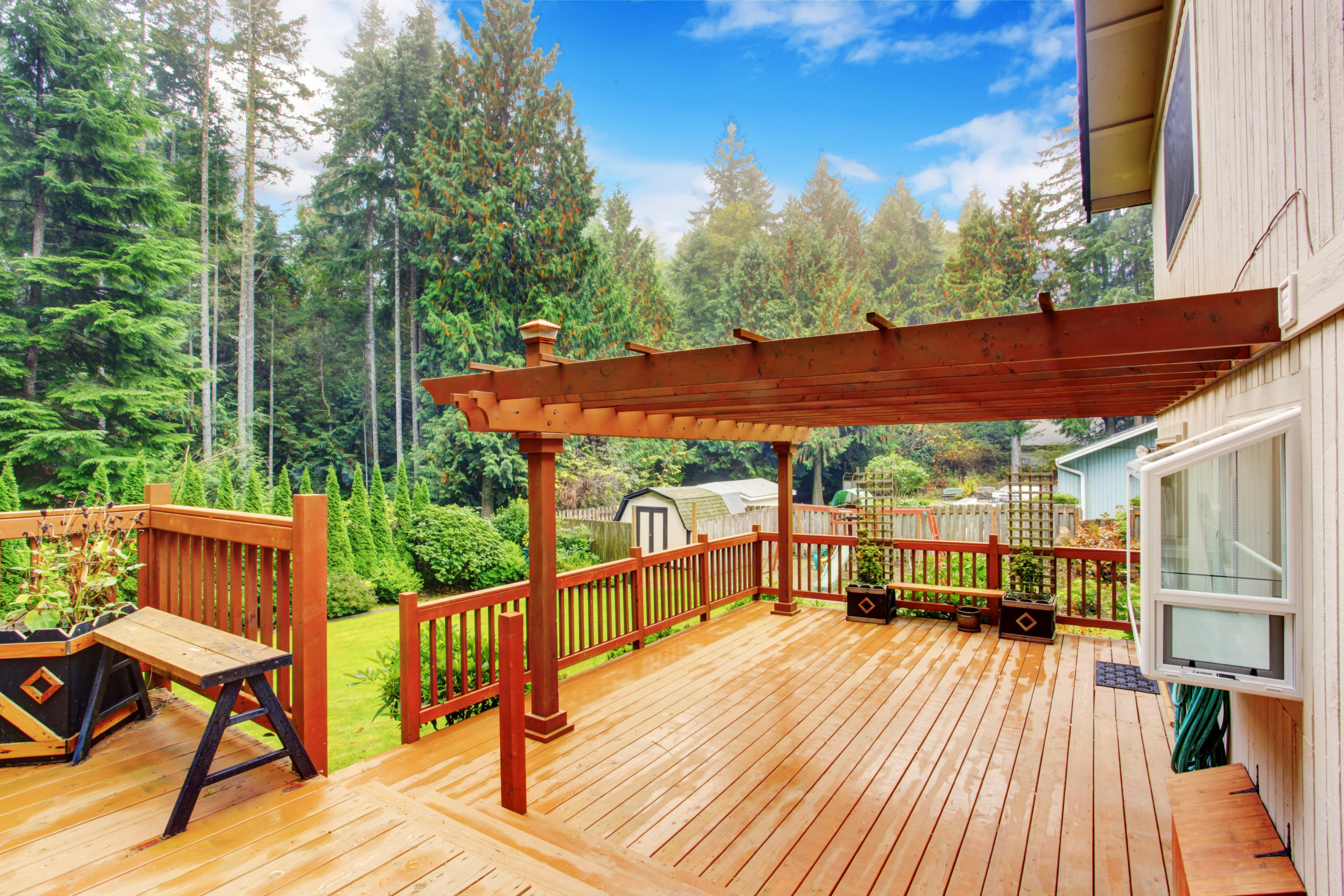
An outdoor timber frame deck is a wonderful way to extend the warmth, elegance, and gracious living of your timber frame home into your outdoor environment. But a timber frame deck must be designed with care and properly maintained for its beauty to last through the years.
Follow these recommendations to get the most from your timber frame deck and keep it protected from the elements. Hamill Creek offers timber frame kits for accents, design elements, and additions to your home, such as timber frame deck kits. Call us to discuss your timber frame patio plans.
What Should You Consider When Building a Timber Frame Deck?
A timber frame deck requires the same considerations as for any type of deck, such as location, function, and building regulations for steps and rails. It also requires special consideration and care.
Specific to timber frame decks:
- Construction and size – Consider the length of your joists when deciding the deck’s size and how far you can go before you need to add another beam. It can be expensive if you must add a set of piers to support the deck.
- Variety of wood – Some wood is more suitable to outdoor use than others. See below for more information about types of wood.
- Maintenance issues – Decks of all types will require some amount of maintenance. However, wood decks do require special care and regular maintenance.
Do Certain Types of Wood Factor into Building Your Deck?
The type of lumber that you use is important, especially in climates with freezing winters, humid summers and heavy precipitation. Pressure treated (PT) wood is less susceptible to insects and rot. However, certain types of PT wood may split, crack or warp, so it must be regularly maintained.
Redwood and cedar are naturally weather resistant, but they can be expensive. These are softer woods, so clean and seal these decks every year. Brazilian ipe wood has become a popular choice for decks, as it resists rot and is very hard, making it more durable. Other exotic (and expensive) choices include teak and mahogany. Oak and cherry hardwoods can also be used, as they’re resistant to weather and extremely durable, but they’re also pricey.
What Stains and Sealants Should You Consider for Your Deck?
What’s good for indoor furniture won’t work for outdoor timber. Lumber needs to breathe and move, due to changes in moisture content and stresses from temperature variations.
Here are some tips for timber frame stains and sealants:
- For a new deck, use a sealant for water protection and to enhance the beauty of the wood. Available either clear or tinted, a sealant lets the wood’s grain show through. Sealants do not offer significant UV protection and should be applied every 1-2 years.
- Stain is better than sealant to protect the deck from degradation and fading, and is a better choice if you want less maintenance.
- Wood deck stain repels water, can resist mold and mildew, and provides UV protection. Some stains allow the wood grain to show through and others don’t. With a new deck, you want to enhance the beauty of the wood grain. With an old weathered deck, you may wish to hide imperfections.
- Choose solid or opaque stain for greater UV protection.
- Oil-based stains penetrate the wood and are durable and long-lasting. Water-based stains dry faster, are easier to clean up and are more eco-friendly.
What Maintenance Needs to be Done Each Year?
Natural wood deck maintenance is essential to protect the deck from dirt, insects, algae and moss, fading from the sun and most critically, water and moisture damage.
- Carefully inspect deck for protruding nails, loose boards and debris. Sweep off plant materials. Take note if any boards squeak or sag. This can indicate rotting, which may require a replaced board. Check joist/beam and beam/post contact points, and where the deck connects to the house. Examine stairs and stringers, and check for water damage.
- Thoroughly clean the deck prior to applying a sealant. Remove debris from between wood boards with a powerful hose nozzle or a power washer at a low pressure so you don’t damage the wood. Use an oxalic acid solution or non-chlorine bleach to remove stains and discoloration. Bleach and acid-based products will remove mildew and stains, but they can wash out and damage the wood. Make sure the cleaner is suitable for your type of wood.
- Take preventative measures to protect your wood deck. Don’t place planters directly on top of wood, as this can trap moisture and dirt. Protect the deck from grill grease. Sweep regularly. Remove snow quickly so moisture won’t build up. Tighten loose boards or railings and replace rotting boards immediately so the damage doesn’t spread.
Learn About Timber Frame Decks from the Timber Framing Experts at Hamill Creek
We have been building eco-friendly, sustainable timber frame structures since 1989 and have the expertise to help you design the perfect timber frame deck for your home environment. Contact us today for more information.
Blog Archive / The Differences Between Timber Frame and Post and Beam